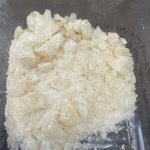The process of creating a character for your brand, presentation or video is a very complex chain of steps that requires a lot of creativity and practice. Don’t let that discourage you if you’re not an illustrator, but want to create your own character. You can always scribble your concepts and enlist the help of an artist for the technical part. We hope you enjoyed immersing yourself in the basics of the character design process and the beautiful examples of talented illustrators. On the topic, in case you’re looking for a character designer, here are your options, listed and explained in another article.
I made a lot of my own characters in elementary school with my best friend, based on certain shows. I knew I didn’t want to make comics because I never read one when I was young and I always loved animated films, the characters always appealed to me. Colors should contribute to your character’s personality, not distract you from it. In many ways, you’ve already successfully designed a character at this point.
At the beginning of your character design process, decide who is trying to address your character. For example, characters intended to appeal to young children often have bright colors and are designed around the use of basic shapes. Of course, while simplicity is key, there’s more to character design than that.
With this in mind, as budding artists copy the style of a particular character designer, they copy the solution to a problem they may not understand. This way, you would develop the idea and even find your own solution that suits you best. If you land on this article, you might be a character designer or an illustrator who wants to experiment with character design. Maybe you’re just curious and want to know what character designers are doing to bring such amazing creations to life.
The reason is that single words keep ideas simple and distill them to their essence, and this is useful when you need to communicate those traits visually. Studios like Disney and Pixar have talented character designers focused on animated stories. However, there are different types of animations that character designers design for. Learn more about animation and the different types out there in our next article. There’s something I particularly like about applying lines and movement to the characters. For me, it somehow makes the character more engaging, knowing that his form is familiar and his movements are smooth.
It looked like they could fit into The Brave Little Toaster. Anyway, I had seen some pictures of bushbabies somewhere and thought it was a good idea to make a bushbaby character. A rule of thumb for character design is that softer, rounder shapes feel friendlier and angular and straight shapes don’t feel as friendly. This isn’t always the case, but in this example, for the most part, it is.
The main argument is usually that illustration tools automate much of the work that a traditional artist would spend hours on. For example, software programs like Adobe Illustrator have great gradient tools where you can easily choose the colors you want to mix and the shape and angle of the gradient. This is not the case when you try to mix colors with acrylic paint on canvas. Budding character designers can get caught up in the moment of inspiration and try to replicate their idea perfectly down to the smallest detail. This is risky because the character will be limited and may not reach their full potential. Creating a unique and memorable character from scratch can be difficult.
If they’re exceptionally strong, you might want to make them look more like heavy characters. The image above is a good example of different body shapes that are correctly used in the design of characters. How would it affect your character if they came from the United States instead of Spain? No matter how stupid you feel, responding to this is one of the best AAC ideas and design how to practice concept art tips I can share. So today, we bring you ten great AAC tips and ideas for everything you need to know about creating cool character designs, using great examples from Envato Elements and Envato Market. If you are looking for a more pictorial style, you can mix these tones with a brush with reduced opacity and periodically taste new shades of gray using the pipette tool.
A cartoon figure design should be clearer and may need more detail depending on the type of cartoon. When designing characters for a client, many elements are often already decided. Understanding who your character’s audience is can help you figure out how to design a character based on that audience’s tastes. So you have the blank canvas in front of you and you want to create a great character.
